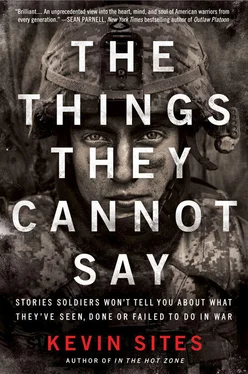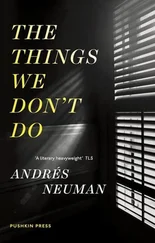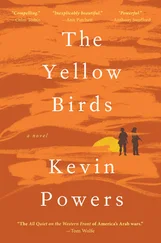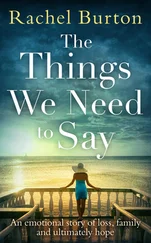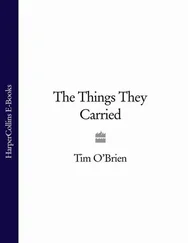At Café Buenos Aires in Kralendijk, Schoonhoven grabs my notebook and begins drawing out what happened. He reiterates that he’s better with his hands than with words, but that’s been obvious, as he’s never stopped talking with them since I first met him. He’s entertained people with sleight-of-hand magic tricks and proved himself a handyman, skilled boat captain and dive master, and in the past a successful chef and sniper. He believes in the spatial rather than the verbal to get his points across. He does it again now, as he draws on the paper in front of me.
He takes my pen and, as if he were outlining the beginning of my last name, makes a giant “S” on the pad. “This is the road,” he says, setting up the story. Schoonhoven says his unit got a call in the early evening that the Afghan National Army (ANA) base nearby was under attack by the Taliban and in danger of being overrun. By the time the Dutch Air Mobile unit could get fully geared up and on the road, the Taliban had made a tactical retreat to nearby mountains. The ANA unit was still at their roadside post, a checkpoint called Chutu, also the access way to Forward Operating Base Hadrian, where the Dutch contingent was stationed. Schoonhoven tells the story in his own words and hands.
“The Taliban had retreated into the mountains, but we knew they were still watching us because we could hear them on their radio frequencies. We stayed there for one night and one day. After that our command told us we were not an occupying force but a protective force and told us to retreat to Camp Hadrian. But when we arrived back at the base we heard that the Chutu crossing was overrun by Taliban. That meant that the Taliban could infiltrate our area. The next day, we had the assignment to recon [conduct reconnaissance on] the road to Cemetery Hill. I was assigned with the infantry, travelling in a Mercedes-Benz soft-top truck. I was sitting in the back. We were the first vehicle. After us came two Patrias [Finnish-built armored personnel vehicles]. The rest of the platoon took another road to check out. While we were traveling we approached an S-turn.” Schoonhoven points to the paper with the pen. “At the end of the S-turn we could see three scooters coming our way. They suddenly fell to the ground. We thought it was an accident but the drivers and passengers immediately ran into the gully and opened fire. It all happened in a split second and was very confusing. The person in front of me, Sergeant Beekman, got hit. He dropped into the driver’s lap and the gunner started firing his machine gun but there was a problem with the gun. At that point I tried to start firing, but bullets were flying everywhere and I could hear them buzzing near my head, only missing me by an inch. Meanwhile, the trouble with the machine gun was that a Taliban bullet had hit the lid and it got jammed. The gunner fixed the problem and started firing again. We wanted to get out of there because the distance between us and the enemy was only twenty meters. The problem was that the two Patria vehicles were behind us in the S-turn”—Schoonhoven draws their position on my pad—“so they could not offer any support and couldn’t turn properly because the road was too small. So we were stuck between the Taliban and our colleagues in the Patrias.” He emphasizes the point by drawing their position on the pad, boxed in between the two. “Eventually the Patria drivers managed to slowly drive back through the S-turn in reverse, so we could retreat. While we were retreating I looked to the right and there were a couple of kids watching the fight, sitting on a wall, hands covering their ears while bullets were flying by and hitting the wall they were sitting on. Our driver tried to reverse, but we got stuck in a ditch. Sergeant Beekman, who was wounded, got out of the truck to guide us out of the ditch and I decided to jump out to stand between my colleagues and the enemy to support them. One of the Taliban was walking towards a wall with a small opening in it. He tried to aim at us through the opening and at that point I got a clear shot at his head and killed him. Just before I pulled the trigger there was a short moment when our eyes met. There were only ten meters between me and him so I could see the bullet entering his skull. Meanwhile the driver had managed to turn our truck in the right direction but not all the Patrias were reversed properly. While they were turning I walked behind the vehicles to protect them. Then I got into the car and we drove to a bridge, where we met the rest of the platoon and lighted up some cigarettes. Our medic looked at the sergeant’s wounds and saw that fortunately his armored vest had saved him. We got into a defensive line and waited awhile for the enemy to retaliate, but they didn’t show and we returned to base safely.”
Back at the base, after the event, Schoonhoven tells me he was still feeling the adrenaline dump of close-quarters combat. He smoked three or four cigarettes in a row. He says to this day he still sees the Taliban’s face and thinks of the mist of blood that exploded from behind the wall after he pulled the trigger. It looked like a balloon filled with flour, he thought, after the round hit, “poof,” and then nothing more. Schoonhoven was awarded the Knight’s Cross for his bravery, the third-highest award given by the Dutch military. The citation reads:
Corporal Sebastiaan Schoonhoven received the decoration for his fearless conduct when he left his hit vehicle during an enemy attack near Shingowlah to give cover to his commanding officer (Sergeant Beekman) so that Beekman could direct the vehicle to a safe area. By putting his own life in danger he prevented casualties within his group.
“There was no time to digest it,” Schoonhoven tells me, putting down the pad and mulling it over. “I would get manic sometimes after, but mostly when back at the base I’d listen to Nirvana and not think at all.”
However, it wasn’t Schoonhoven’s first but rather his second kill, I learn, that haunted him long after his deployment in Afghanistan was over. He pauses again before telling the story. It started when his unit got word that the Taliban had taken over a school near the village of Shian Shan. Two Dutch platoons rolled out of Camp Hadrian to confront the Taliban fifteen kilometers to the north. This time Schoonhoven was manning a .50 caliber turret gun on a Patria armored personnel carrier. The convoy also had two other Patrias, eight Mercedes-Benz trucks and two Swedish-made troop carriers called YPRs. It was a lot of firepower, but these Dutch soldiers already knew that in a fight with the Taliban more is always better. As they approached the village, Schoonhoven and his fellow soldiers saw civilians moving in the opposite direction, a bad sign. They saw Pashto graffiti on a mud wall. [32] Pashto and Dari are the two official languages of Afghanistan, with Pashto being used primarily by the Pashtun people prevalent in southern Afghanistan and Dari widely spoken in the northern, western and central regions of the country.
Their Afghan interpreter told them what it said: “Fuck NATO.”
“We knew the shit was going to hit the fan any minute,” Schoonhoven tells me.
One hundred meters outside the village, Schoonhoven’s vehicle dropped two four-man fireteams out of the back, then pulled up to a plateau near the Helmand River to provide overwatch protection for them. Within moments they were taking Taliban mortar fire. The mortars signaled the start of the ambush, followed by heavy machine-gun fire from the northeast. The Taliban were using Russian-made “Dushka” machine guns, so nicknamed because of the low “ dush, dush ” belly-exhaling sound they make when being fired.
Soon the Dutch were dodging rocket-propelled grenades coming from the village graveyard. The Taliban’s three-pronged attack dissected the Dutch unit, pinning the soldiers down with fields of fire to the north and south. The Dutch units returned fire, but they were also badly exposed. Schoonhoven swung his .50 cal toward the graveyard and fired a burst. The first rounds plowed up the ground in front of the Taliban firing positions. Taliban continued popping up around the graveyard, firing down on Dutch troops. Schoonhoven aimed a bit higher, took a breath and pulled the trigger; he saw the silhouette of a fighter go down. Yeah! Got another one, he thought to himself initially, but then realized how small the shape was compared to the others. But there was no time to think; his commander was yelling to him that there were three men in the trees above the graveyard. He pivoted the big gun, put the tree in his sights and held down the trigger until the last of the belt ran through the feeder. When the dust cleared, he could see the entire tree was gone, and so was his ammo. The Taliban were still firing.
Читать дальше
